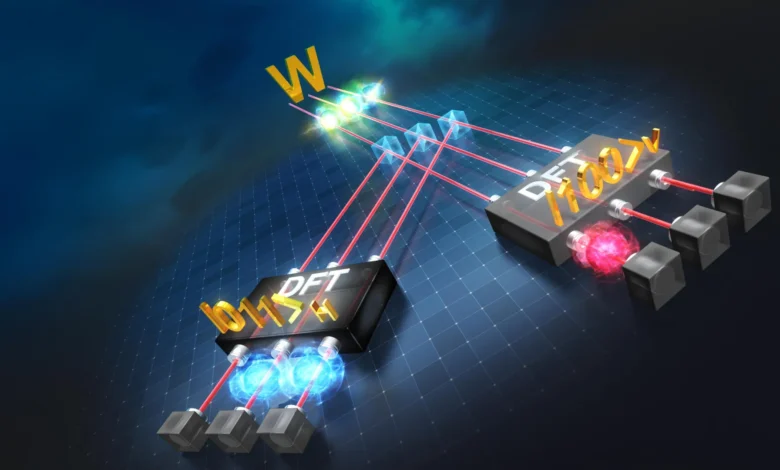Quantum Breakthrough Paves Way for Teleportation and Advanced Computing

▼ Summary
– Quantum entanglement defies classical physics by linking particles in ways that prevent separate descriptions, which concerned Einstein and is key for quantum technologies.
– Conventional quantum tomography faces exponential measurement growth with photon numbers, creating data challenges for identifying entangled states.
– Researchers developed a new entangled measurement method for the W state, achieving experimental demonstration for three-photon states after over 25 years of prior work only on GHZ states.
– The team used photonic quantum circuits with quantum Fourier transformation to distinguish W states and evaluate measurement fidelity without active control.
– This breakthrough enables advances in quantum teleportation, communication protocols, and measurement-based computing, with plans to scale up for larger entangled states.
The world of quantum physics has taken a significant leap forward with a new method for identifying complex multi-photon entangled states, bringing advanced technologies like quantum teleportation and next-generation computing closer to reality. This breakthrough centers on the elusive W state, a fundamental quantum configuration that has long resisted experimental characterization.
Quantum entanglement describes a phenomenon where particles become inseparably linked, sharing a single quantum description regardless of distance. This strange behavior, which troubled Einstein himself, lies at the heart of emerging quantum technologies. To harness its potential, scientists must not only generate these entangled states but also accurately identify them, a task that grows exponentially harder as more particles are involved.
Traditional quantum tomography, the usual method for state identification, requires a prohibitive number of measurements as photon numbers increase. A more elegant solution lies in entangled measurement, which can determine the state in a single attempt. While such a technique already existed for GHZ states, the W state, another critical multi-photon configuration, had remained out of reach for over two decades.
A collaborative team from Kyoto University and Hiroshima University took on this challenge. By focusing on the cyclic symmetry inherent to W states, they designed a photonic quantum circuit capable of performing a quantum Fourier transformation tailored for these states. The device they constructed exhibited remarkable stability, operating for extended periods without requiring active control.
By injecting three individually prepared photons into the circuit, the researchers successfully distinguished between different types of three-photon W states. Each configuration corresponded to a specific non-classical correlation among the photons. The team also evaluated the fidelity of their measurements, confirming the probability of achieving correct results when analyzing a pure W-state input.
This advancement is more than a laboratory curiosity. It enables the transfer of quantum information through teleportation and supports the development of novel quantum communication protocols. The technique also facilitates the movement of multi-photon entangled states and offers new pathways for measurement-based quantum computing.
Looking ahead, the research group intends to scale their method to accommodate larger and more generalized multi-photon systems. They are also developing on-chip photonic circuits to make these entangled measurements more accessible and practical for future applications.
(Source: Science Daily)





